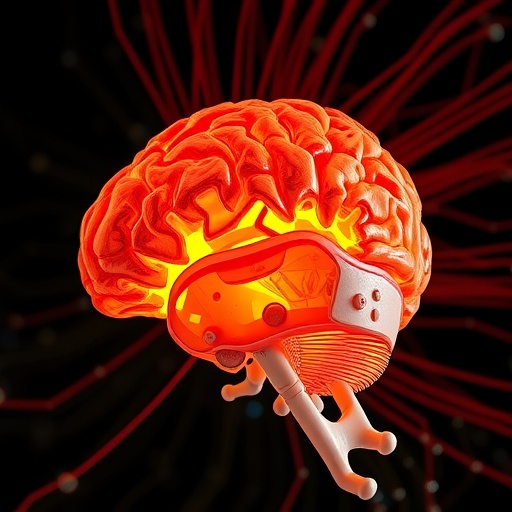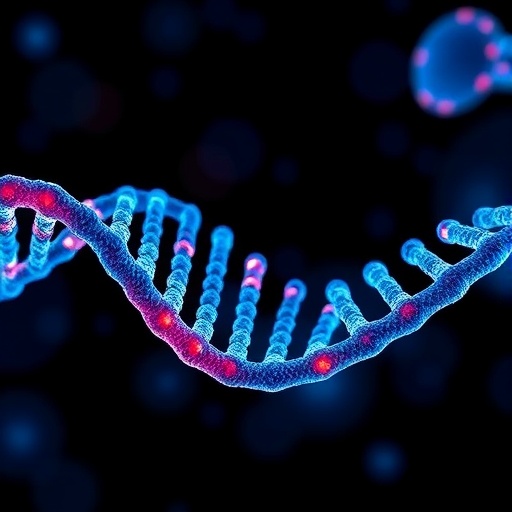In a groundbreaking study published in the “Annals of Biomedical Engineering,” researchers have unveiled new insights into the mechanical characteristics of brain tissue. This research sheds light on the extraordinary properties of grey matter, white matter, and the crucial interfaces that separate these distinct types of brain tissue. The work, authored by Sheridan and Concannon, signifies a major advancement in our understanding of the brain’s mechanical behavior, which is paramount for developing improved treatments for neurological disorders and for advancing brain-inspired technologies.
The study observes that grey and white matter, while part of the same organ, exhibit markedly different mechanical properties. Grey matter, densely packed with neuronal cell bodies, is fundamentally different in structure and function compared to the more fibrous, myelin-rich white matter. By employing innovative mechanical characterization techniques, researchers have quantified these differences in stiffness, resilience, and response to deformation. Such distinctions are not merely academic; they could have profound implications for how brain injuries and diseases affect different cerebral regions.
Utilizing advanced imaging technologies alongside mechanical testing methods, the team was able to perform a comprehensive analysis of the brain’s tissue. The research involved rigorous experimental setups to measure the stress-strain responses of brain samples in conditions that mimic physiological environments. The findings indicate that grey matter exhibits greater tensile strength compared to white matter, which can significantly influence the propagation of injuries such as traumatic brain injury (TBI) or stroke.
Furthermore, the study delves into the properties of the transitional zones or interfaces between grey and white matter. These zones are critical, serving not only as structural boundaries but as functional transmission regions where information is relayed and processed. Understanding the mechanical behavior of these interfaces allows for a better grasp of how neuronal signals navigate through the brain, providing a more nuanced view of cognitive function and dysfunction.
The researchers highlight that the mechanical properties of brain tissues can deteriorate with age or due to pathological conditions. This deterioration can lead to functional impairments and is a significant concern in the context of age-related neurodegenerative diseases like Alzheimer’s. By establishing a detailed mechanical profile of the brain, this research opens doors to potential biomimetic strategies that might mitigate such effects, leading to innovative therapeutic approaches.
Another critical aspect of this study is its implications for regenerative medicine and tissue engineering. The insights gained from understanding the mechanical characteristics of brain tissues can inform the design of scaffolds and biomedical implants aimed at promoting neuronal regeneration or enhancing the integration of prosthetic devices with native brain structures. These advancements could significantly improve recovery outcomes for patients suffering from various neurological conditions.
Moreover, the research team emphasizes the importance of interdisciplinary approaches in studying the brain. The mechanical characterization of brain tissues necessitates collaboration between biomedical engineers, neuroscientists, and clinicians. By combining expertise across these fields, the potential for developing holistic, effective treatment strategies improves dramatically. This collaborative model could serve as a blueprint for future research endeavors in other areas of biomedical engineering.
It is worth noting that the tools and methodologies employed in this study represent the cutting edge of biomechanical analysis. High-fidelity imaging and advanced material testing techniques afford researchers the precision needed to discern the subtle differences in mechanical behavior between various brain regions. The incorporation of computational modeling further enriches the understanding of these mechanical properties, allowing for predictions and simulations that can guide further experiments.
Sheridan and Concannon’s work stands as a testament to the dynamic nature of biomedical research. As new technologies emerge, the capacity to probe deeper into biological systems continues to expand. This study is not only a step toward unraveling the complexities of brain mechanics but also signifies the potential for future advancements that could reshape our approach to treating brain injuries and diseases.
The potential applications of this research stretch beyond immediate medical intervention; they may also influence the development of artificial intelligence and machine learning systems inspired by brain architecture and function. These interventions could pave the way for computers that process information similarly to the human brain, enhancing cognitive computing capabilities.
This detailed exploration of the mechanical properties of grey matter, white matter, and their interfaces underscores the sophistication of the human brain. The brain’s evolutionary trajectory has optimized its structure not just for function but also mechanical resilience. Future research, building upon this foundation, holds promise for unlocking new treatment modalities that can address an array of neurological challenges.
In conclusion, the mechanical characterization of brain tissue, as presented in this remarkable study, provides pivotal insights that are likely to reverberate through various fields of medical science and technology. The work of Sheridan and Concannon is expected to be a cornerstone in future brain research, paving the way for innovations in treatment, diagnostics, and brain-computer interfaces.
As the medical community continues to grapple with the intricacies of brain health, studies like these remind us of the importance of understanding the physical realities that underlie neural processes. The mechanical characteristics of brain tissue are not merely a factor of academic interest; they play a crucial role in how we comprehend and approach neurological health and disease in the modern era.
Subject of Research: Mechanical Characterisation of Grey, White, and Interface Behaviour in the Brain
Article Title: Mechanical Characterisation of Grey, White, and Interface Behaviour in the Brain
Article References:
Sheridan, C., Concannon, J. Mechanical Characterisation of Grey, White, and Interface Behaviour in the Brain.
Ann Biomed Eng (2025). https://doi.org/10.1007/s10439-025-03877-x
Image Credits: AI Generated
DOI: 10.1007/s10439-025-03877-x
Keywords: Mechanical properties, brain tissue, grey matter, white matter, neurological disorders, biomechanics, brain health, regenerative medicine, tissue engineering, brain-computer interfaces.
Tags: Annals of Biomedical Engineering studybrain injury implicationsbrain-inspired technology developmentexperimental analysis of brain mechanicsgrey matter vs white matter characteristicsimaging technologies in neuroscienceinnovative mechanical characterization techniquesmechanical behavior of cerebral regionsmechanical properties of brain tissueneurological disorder treatment advancementsstiffness and resilience of brain tissuestress-strain responses of brain samples





